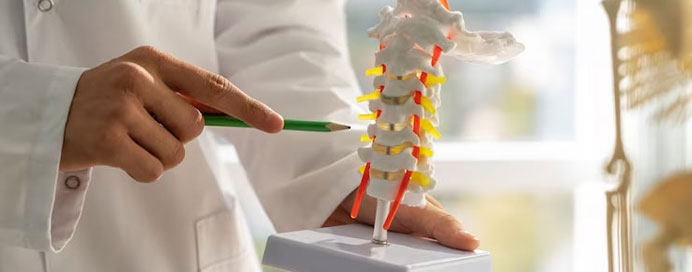Services / Dr. Ravi Bhanushali

The spine, also known as the vertebral column or backbone, is a crucial part of the human skeletal system. It provides structural support, protects the spinal cord, and allows for various movements. The spine is composed of individual vertebrae, which are stacked on top of each other, forming distinct regions.
Here’s an overview of the normal anatomy of the spine:
Understanding the normal anatomy of the spine is essential for diagnosing and treating spinal conditions. Any deviation from the normal structure, such as herniated discs, fractures, or deformities, may impact spinal function and require medical attention. It’s important to consult with healthcare professionals, such as orthopedic surgeons or neurologists, for proper evaluation and management of spinal issues.
